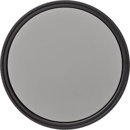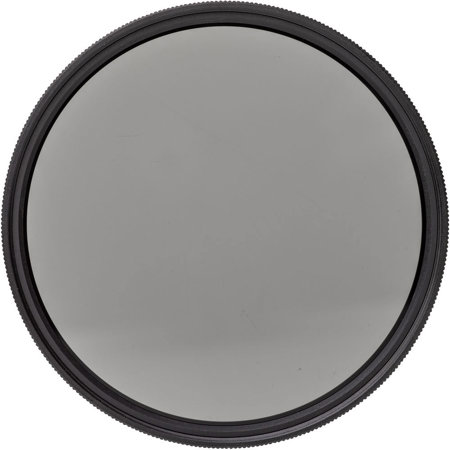
Heliopan 82mm Circular Polarizer Filter
SKU: HP82CPL
This item is no longer available.
Recommended Alternatives
Share:
Overview
Compare
Accessories
Protection
Q&A
Questions & Answers
Shopper : Does this filter have threads on the front, for stacking? Is it very thick?JEFF M : The filter screws on and there are threads in front for stacking. The filter is 8cm or 3/8" thick.JACKIE M : I don't know about Heliopan, but the B+W filters have the front threads and layer perfectly while STILL allowing for lens cap attachment. B+W filters have many superior features making them worth the price. Check out their specs, you'll be happy if you purchase the brand.
Reviews about this item
Review Summary
2019-11-12T10:13:44
Rated 4 out of 5
Good quality
I’me new to photography but this filer seems to be working fine.
Elroy B.
2018-07-12T12:39:01
Rated 5 out of 5
Great Filter
Remember, try not to put anything that isn't made from Schott Glass in front of you lens! That's what Leitz (Leica) are made from. It really DOES matter!
Peter S.
2018-05-06T13:14:40
Rated 5 out of 5
Flawless filter
I purchased this filter to fit a newly purchased lens in lieu of buying an adapter ring and using a filter I use on other lenses. My other polarizer is also Heliopan and it has served me well for many years. The new one shows the same strengths; smooth and bind-free threads, edge to edge even tones, excellent water, dust and smudge resistance and durability. Higly recommended.
Robert W.
2017-12-11T16:20:46
Rated 5 out of 5
Great filter
Can’t recommend highly enough
Andrew B.
2014-07-18T21:00:00
Rated 4 out of 5
excellent quality, heavy
Excellent quality, does not need much cleaning, does not collect dust but it is heavy.
IVO E.
2014-01-27T19:00:00
Rated 4 out of 5
Quality lenses deserve quality filters
With today's expensive cameras and lenses costing more than every before, when it comes time to select a filter there are alot of less expensive choices than Heliopan. But, it doesn't make a lot of sense to trade a great picture for a good picture. color saturation and anti-reflection so often becomes the difference between "nice shot" and "wow!". Heliopan makes your image pop. The only thing I may have done differently would have been to go with a slim Polarizer. At 77mm, there is always the chance of vignetting. So far, I haven't had that issue, however.
John P.
2012-08-03T21:00:00
Rated 5 out of 5
Always 100% reliable quality
I use the Heliopan circular polarizing filter mostly to enhance the colors in the sky. I do use it, of course, to reduce glare, mostly off water. This filter simply does what it's supposed to do and does it very well. I've never had a Heliopan filter get stuck on a lens. The brass threads work!
BURNEY H.
2012-04-15T21:00:00
Rated 5 out of 5
"Excellent Product"
Filter is most usefull to adjust the color of sky & clouds
Mike
2009-08-18T21:00:00
Rated 2 out of 5
is this a used filter??
I was expecting a new filter. What cam was a scratched up filter case, open in the packing bx. The grooves on the filter ring had some brown rusty gunk on them and there was a brown ring imprint inside the filter case (more of the rusty gunk?)
e2d2
2008-08-24T21:00:00
Rated 4 out of 5
Takes your photos to a new level
Used with 18-250MM lens, shooting structures (homes mostly). I use it primarily to block out reflections in windows and produce more contrasting, richer colors, and also to protect the lens. I'm impressed by the quality. Rings are factory marked with numbers, which is nice. Just testing it out on my LCD at home, I achieved nearly 100% polarization (screen almost entirely black). This is the thinnest filter I could obtain, but it still vignettes at 18mm on my lens (not as bad as others I have tried though). There may be no solution but to get a step up ring and move to to a larger filter. It also appeared to have been used, as there was quite a bit of grime on the edge of the glass and the ring appears to have been scratch-marked by the previous owner. I would recommend this to a friend, but only if it were new and not used with a lens like mine. But as for the filter quality, it's top notch. Just be aware that even if the description claims to not vignette, it's no guarantee.
JEFFREY B.
2007-12-03T19:00:00
Rated 5 out of 5
On par with any B+W Polarizer.
I purchased this filter for use on the Mamiya 7 lenses with a 58mm fitting, and for the Canon 50mm f1.4 & 100mm f2.8 Macro lenses. On the Canons, it works much like any other Polarizer, but image quality reminds me in some ways of the B+W/Heliopan Kaesemann Polarizers. In other words, fantastic results! However, my main reason for choosing it was the added benefit of a numbered front ring; absolutely essential for Range-finder cameras like the Mamiya 7. It does the job perfectly. Tremendous value for money at the current price.
Yukihyo
Select a plan in the Add Protection section above and purchase with this product by clicking “Add to Cart”.
TRUSTED PROTECTION PLANS, EXCEPTIONAL SERVICE.
Invest In Your Gear and Peace Of Mind!
Accidents happen where life happens. Protect your favorite Adorama products and purchase a protection plan to stay covered from accidental damage, mechanical or electrical failure, and more.
Repair or Replacement
If we can’t fix it, we’ll replace it at no additional cost.
Accidental Damage
Protect your product from drops, spills, and more.
Peace of Mind
Enjoy your gear without fear. We have you covered!
Malfunction Protection
When regular use of your product over time results in mechanical or electrical failure.
Zero Deductible
We will never charge you a deductible after the purchase of a plan.
Customer-Focused Support
Our claims process is simple & easy and our customer service team is happy to help.
Adorama Protect powered by Extend is available for purchase to customers in the United States. Not available for purchase Internationally or in U.S. Territories.
Browse our FAQ
3 Accessories for Heliopan 82mm Circular Polarizer Filter
- All Accessories (3)
- Bags & Cases (1)
- Cleaning Accessories (2)
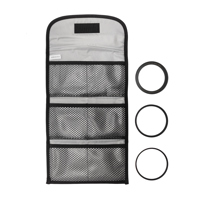
Slinger Filter Wallet "P" Holds 6x 82mm Round or 6x Square Filters,Black
$13.95
Recommended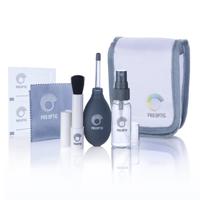
ProOptic Complete Optics Care and Cleaning Kit
$19.95
Recommended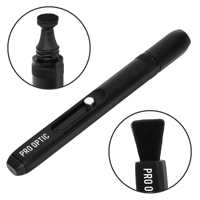
ProOptic Lens Pen Lens Cleaner
$7.99
RecommendedAbout Heliopan Circular Polarizer
FEATURED REVIEWS
Always 100% reliable quality
By BURNEY H.
I use the Heliopan circular polarizing filter mostly to enhance the colors in the sky. I do use it, of course, to reduce glare, mostly off water. This filter simply does what it's supposed to do and does it very well. I've never had a Heliopan filter get stuck on a lens. The brass threads work!
On par with any B+W Polarizer.
By Yukihyo
I purchased this filter for use on the Mamiya 7 lenses with a 58mm fitting, and for the Canon 50mm f1.4 & 100mm f2.8 Macro lenses. On the Canons, it works much like any other Polarizer, but image quality reminds me in some ways of the B+W/Heliopan Kaesemann Polarizers. In other words, fantastic results! However, my main reason for choosing it was the added benefit of a numbered front ring; absolutely essential for Range-finder cameras like the Mamiya 7. It does the job perfectly. Treme...
View full Review
Polarizing filters, are color neutral and increase picture taking possibilities with black and white or color film. In color photography, unlike black and white photography, there is no possibility to change contrast or color saturation with colored filters. To do so would also change the colors in the photograph. Natural light spreads in a wave form in all direction. Sunlight is polarized and has a high color purity. When passing through the atmosphere a part of it is scattered, which results in a blush gray haze over all colors. This effect can be reduced or eliminated by using polarizing filters. If, in addition, light falls at an angle of approximately 35 Degree onto a reflecting surface, e g. water, glass, plastic, color surfaces, with the exception of metallic surfaces, the light becomes reflected and polarized. If one uses a properly orientated polarizing filter, the reflections are absorbed and the true colors can reach the film. Water surfaces become transparent and clouds are more saturated.
The light loss of a polarizing filter varies between 1 and 1.5 F stops which, depending on camera type, can be manually or automatically corrected. HELIOPAN polarizing filters consist of a neutral color foil cemented between two plane parallel glass discs. The foil is constructed so that light rays can only pass in one plane. The polarizing filter is mounted in a calibrated rotating ring so the desired position and effect can be easily set. With an SLR one sees the result in the finder, with viewfinder type cameras one holds the polarizer in front of the eye and turns it to see the desired effect. Then with the assistance of the calibrated rim, which is on every HELIOPAN polarizing filter, it is easy to set the filter to the same position on the lens. If no effect is visible, the available light conditions can not be polarized. In this case its use is not advisable.
In principle there are two different kinds of polarizer's, linear and circular. The circular is required with camera systems where the built-in light measuring system uses light that has passed through the mirror via a beam splitter. In this case the light is already partially polarized, on all AF-cameras. Using linear polarizing filters cause in correct focusing measurements. The circular polarizer has a second component, a 1/4 wave plate in its construction. The polarized light is set in rotation by this plate and can therefore pass without interruption through the measuring system and give proper measurements.
Circular polarizer's are also recommended with the auto focus lenses in video cameras. Over heating of the polarizing filter should be avoided.
Heliopan Circular Polarizer Features
- Circular polarizing filter for all SLR cameras with TTL metering via the mirror and/or auto focus lenses
Key Features
- Circular polarizing filter for all SLR cameras
